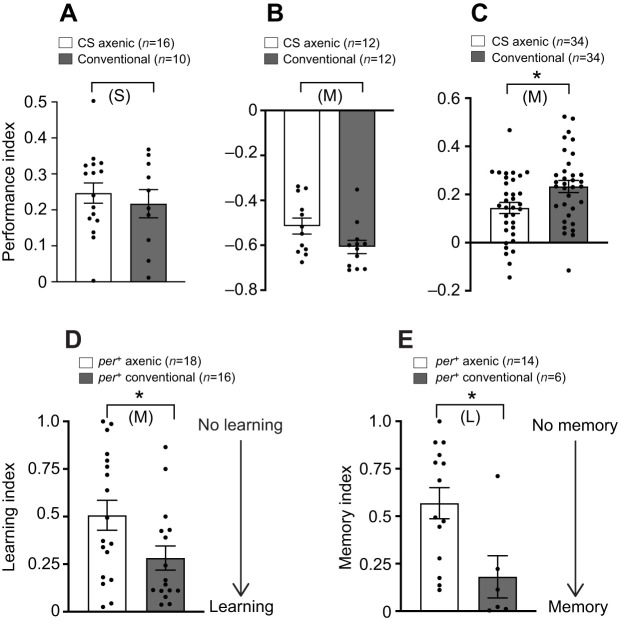Fig. 1.
Effect of the microbiome on learning and memory. (A–C) Quantification of learning and memory using appetitive (A: immediate; C: after 24 h) and aversive (B: immediate) learning and memory assays for the Canton S (CS) strain of Drosophila melanogaster. (D,E) Quantification of learning (D) and memory (E) in a courtship-conditioning assay. For results shown in A–C, CS flies from S.W.’s lab were used; n corresponds to the number of T-maze iterations (∼200 flies per iteration, see Materials and Methods). For D and E, per+ (wild-type) flies from an isogenic panel from J.E.’s lab were used; n corresponds to the number of flies tested. Results are shown as means±s.e.m. and were analyzed by unpaired t-test; P-values obtained were (A) P=0.5334, (B) P=0.0585, (C) *P<0.0107, (D) *P<0.0337 and (E) *P<0.0117; S, M, L: small, medium and large effect size, respectively; Hedges' g effect size analysis. See Table S1 for values.

